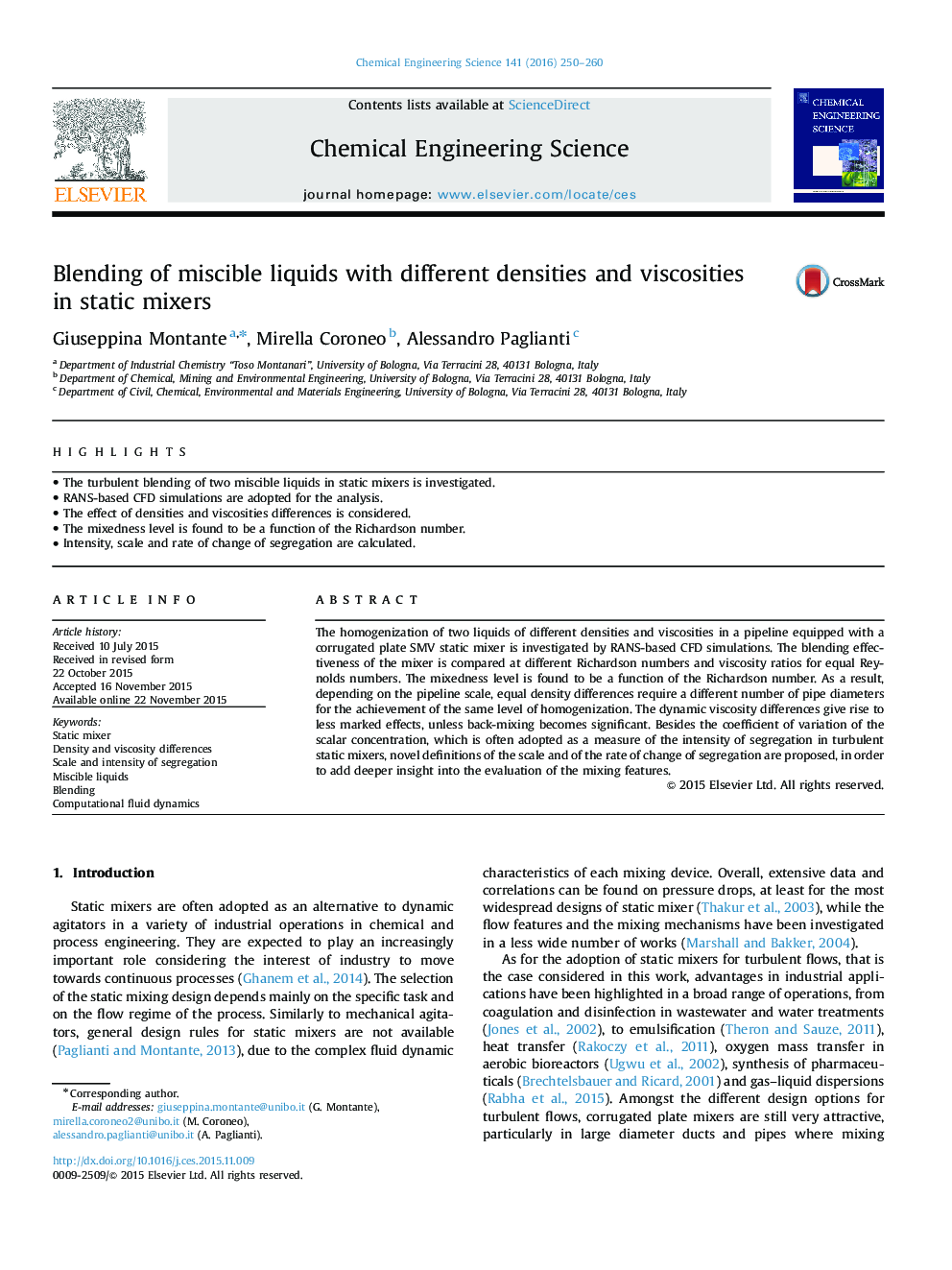| Article ID | Journal | Published Year | Pages | File Type |
|---|---|---|---|---|
| 154463 | Chemical Engineering Science | 2016 | 11 Pages |
•The turbulent blending of two miscible liquids in static mixers is investigated.•RANS-based CFD simulations are adopted for the analysis.•The effect of densities and viscosities differences is considered.•The mixedness level is found to be a function of the Richardson number.•Intensity, scale and rate of change of segregation are calculated.
The homogenization of two liquids of different densities and viscosities in a pipeline equipped with a corrugated plate SMV static mixer is investigated by RANS-based CFD simulations. The blending effectiveness of the mixer is compared at different Richardson numbers and viscosity ratios for equal Reynolds numbers. The mixedness level is found to be a function of the Richardson number. As a result, depending on the pipeline scale, equal density differences require a different number of pipe diameters for the achievement of the same level of homogenization. The dynamic viscosity differences give rise to less marked effects, unless back-mixing becomes significant. Besides the coefficient of variation of the scalar concentration, which is often adopted as a measure of the intensity of segregation in turbulent static mixers, novel definitions of the scale and of the rate of change of segregation are proposed, in order to add deeper insight into the evaluation of the mixing features.
